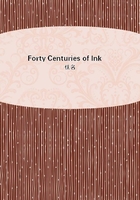
第13章
It is affirmed that the eruption of Mt. Vesuvius A. D. 79, did not entirely destroy the cities of Herculaneum and Pompeii, and that they emerged from their ruins in the reign of the Emperor Titus. They are also mentioned as inhabited cities in the chart of Peutinger, which is of the date of Constantine.
The next eruption, A. D. 471, was probably the most frightful on record if we exclude the volcanic eruption of Mt. Pelee, which occurred in Martinique, West Indies, in 1902, destroying thirty thousand human beings in fifteen minutes and devastating nearly the entire island. From Marcellinus we learn that the ashes of the Vesuvius volcano were vomited over a great portion of Europe, reaching to Constantinople, where a festival was instituted in commemoration of the strange phenomenon. After this, we hear no more of these cities, but the portion of the inhabitants who escaped built or occupied suburbs at Nola in Campania and at Naples. In the latter city, the Regio Herculanensium, or Quarter of the Herculaneans, an inscription marked on several lapidary monuments, indicates the part devoted to the population driven from the doomed city.
The ancient inkstand found at Herculaneum, said to contain a substance resembling a thick oil or paint characteristic of a material which it is alleged, "some of the manuscripts have been written in a sort of relievo, visible in the letters when a 'leaf' is held to the light in a horizontal direction," it is not impossible, indeed it is quite probable, belonged to an era centuries later than the period to which it has been assigned.
"No perfect papyri, but only fragments, have been found at Pompeii. At Herculaneum, up to the year 1825, 1,756 had been obtained, besides many others destroyed by the workmen, who imagined them to be mere sticks of charcoal. Most of them were found in a suburban villa, in a room of small dimensions, ranged in presses round the sides of the room, in the center of which stood a sort of rectangular bookcase.
"Sir Humphry Davy, after investigating their chemical nature, arrived at the conclusion that they had not been carbonized by heat, but changed by the long action of air and moisture; and he visited Naples in hopes of rendering the resources of chemistry available towards deciphering these long-lost literary treasures. His expectations, however, were not fully crowned with success, although the partial efficacy of his methods was established; and he relinquished the pursuit at the end of six months, partly from disappointment, partly from a belief that vexatious obstacles were thrown in his way by the jealousy of the persons to whom the task of unrolling had been intrusted.
About five hundred volumes have been well and neatly unrolled. It is rather remarkable that, as far as can be learned, no manuscript of any known standard work has been found, nor, indeed, any production of any of the great luminaries of the ancient world. The most celebrated person of whom any work has been found is Epicurus, whose treatise, De Natura, has been successfully unrolled. This and a few other treatises have been published. The library in which this was found appears to have been rich in treatises on the Epicurean philosophy. The only Latin work which it contained was a poem, attributed to Rabirius, on the war of Caesar and Antony."Beginning with A. D. 200, the employment of inks became more and more constant and popular. Rediscoveries of ancient formulas belonging to a more remote antiquity multiplied in number. Silver ink was again quite common in most countries. Red ink made of vermilion (a composition of mercury, sulphur and potash) and cinnabar (native mercuric sulphide)were employed in the writing of the titles as was blue ink made of indigo, cobalt or oxide of copper. Tyrian purple was used for coloring the parchment or vellum.
The "Indian" inks made by the Chinese were imported and used in preference to those of similar character manufactured at home. The stylus and waxed tablets though still used, in a measure gave way to the reawakened interest in ink and ink writings.
A greater facility in writing, due to the gradual reduction in size of the uncial (inch) letters was thereby attained.
There were "writers in gold" and "writers in silver" who travelled from the East into Greece and who bad found their way before the third century into the very heart of Rome. Their business was to embellish the manuscript writings of those times. It was considered en regale for authors to "illuminate"their MSS. and those who failed to do so suffered in popularity.
These authors frequently allude to their use of red, black and secret inks.
Martial in his first epistle points out the bookseller's shop opposite the Julian Forum where his works may be obtained "smoothed with pumice stone and decorated with purple." Seneca mentions books ornamented "cum imaginabus." Varro is related by the younger Pliny to have illustrated his works by pictures of more than seven hundred illustrious persons.
Martial dwells on the edition of Virgil, with his portrait as a frontispiece.